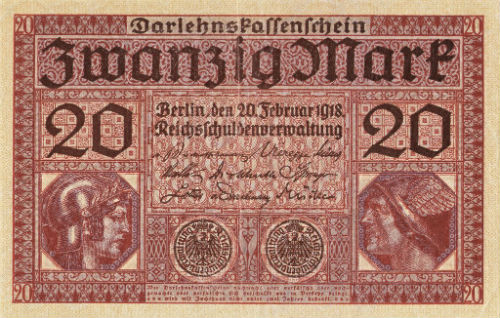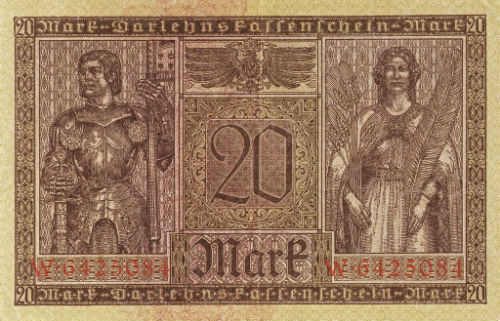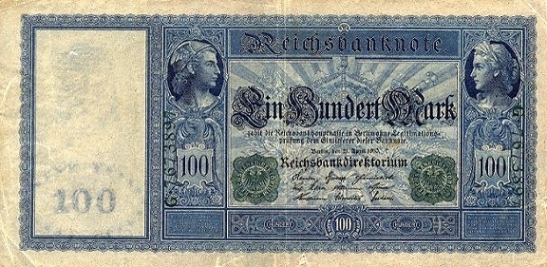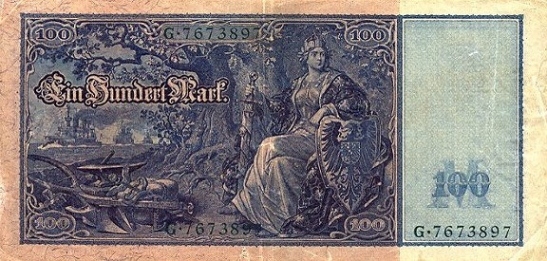Germany (Empire)

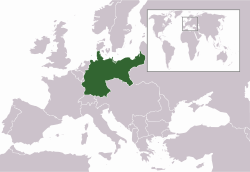 The German Empire is the common name given to the state officially named the Deutsches Reich (literally: "German Realm"), designating Germany from the unification of Germany and proclamation of Wilhelm I as German Emperor on 18 January 1871, to 1918, when it became a federal republic after defeat in World War I and the abdication of the Emperor, Wilhelm II.
The German Empire is the common name given to the state officially named the Deutsches Reich (literally: "German Realm"), designating Germany from the unification of Germany and proclamation of Wilhelm I as German Emperor on 18 January 1871, to 1918, when it became a federal republic after defeat in World War I and the abdication of the Emperor, Wilhelm II.The German Empire consisted of 27 constituent territories (most of them ruled by royal families). While the Kingdom of Prussia contained most of the population and most of the territory of the Reich, the Prussian leadership became supplanted by German leaders and Prussia itself played a lesser role. As Dwyer (2005) points out, Prussia's "political and cultural influence had diminished considerably" by the 1890s. Its three largest neighbors were rivals Imperial Russia to the east, France to the west and ally Austria-Hungary to the south.
After 1850, Germany industrialized rapidly, with a foundation in coal, iron (and later steel), chemicals and railways. From a population of 41 million people in 1871, it grew to 68 million in 1913. From a heavily rural nation in 1815, it was now predominantly urban. During its 47 years of existence, the German Empire operated as an industrial, technological and scientific giant, receiving more Nobel Prizes in science than Britain, France, Russia and the United States combined.
It became a great power and its navy went from being negligible to second only behind the Royal Navy in less than a decade. After the removal of the powerful Chancellor Otto von Bismarck in 1890 following the death of Emperor Wilhelm I, the young Emperor Wilhelm II engaged in increasingly reckless foreign policies that left the Empire isolated. Its network of small colonies in Africa and the Pacific paled in comparison to the British and French empires. When the great crisis of 1914 arrived, it had only two weak allies (Austria-Hungary and Ottoman Empire) left. In World War I its plans to quickly capture Paris in 1914 failed and the Western Front (against Britain and France) became a stalemate. The Allied naval blockade made for increasing shortages of food. However, Germany, as a result of the Communists' determination to end Russian involvement in World War I, carved large Eastern territories following the Treaty of Brest-Litovsk. German declaration of unrestricted submarine warfare in early 1917 was designed to strangle the British; it failed because of the use of a trans-Atlantic convoy system. But the declaration - along with the Zimmermann Telegram - did bring the United States into the war, with its large reserves of money, food, and soldiers. The high command under Paul von Hindenburg and Erich Ludendorff increasingly controlled the Reich as they gambled on one last offensive in spring 1918 (before the Americans could arrive in force). It failed and by October the armies were in retreat, the Austro-Hungarian Empire had collapsed, and the German people had lost faith in the political system. The Empire collapsed overnight in the November 1918 Revolution as all the royals abdicated and a republic took over. (© wikipedia)
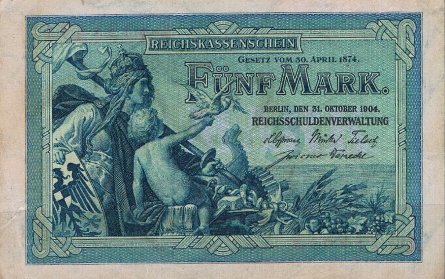
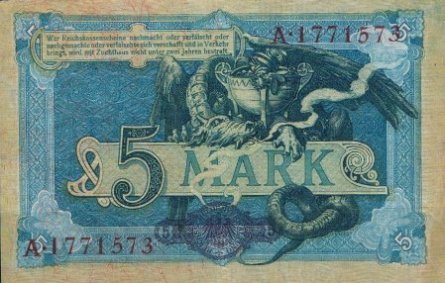
- Nominale waarde: 5Mark
- Picknummer: 8b
- Jaar van uitgifte: 1904
- Serienummer in eigen collectie: A1771573
- Voorzijde: Germania met kind en duif
- Achterzijde: draak

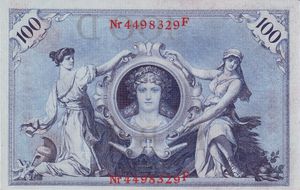
- Nominale waarde: 100 Mark
- Picknummer: 33a
- Jaar van uitgifte: 1908
- Serienummer in eigen collectie: 1239770F
- Voorzijde: Duitse adelaar
- Achterzijde: vrouwenfiguren
50 Mark - P41
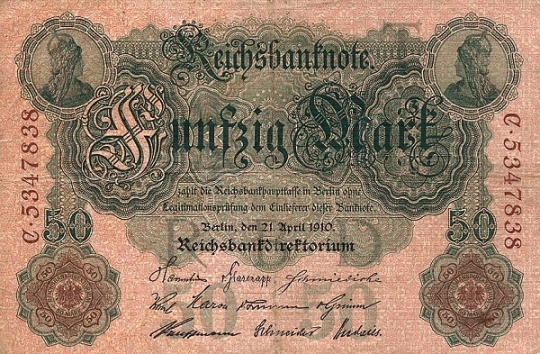
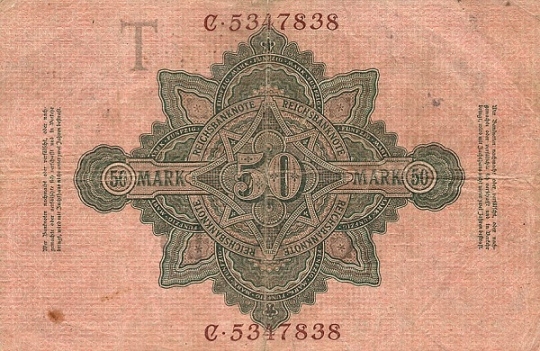
- Nominale waarde: 100 Mark
- Picknummer: 43a
- Jaar van uitgifte: 1910
- Serienummer in eigen collectie:
- Voorzijde: Mercury en Ceres
- Achterzijde: Germania en stoomoorlogsboten
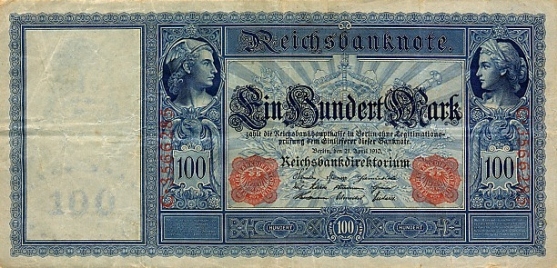
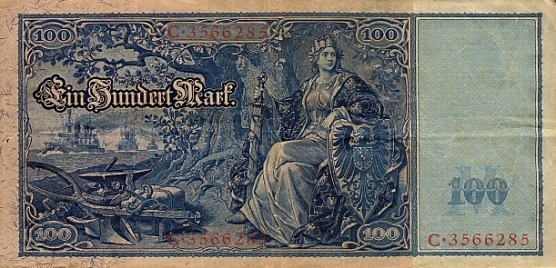
- Nominale waarde: 100 Mark
- Picknummer: 43b
- Jaar van uitgifte: 1910
- Serienummer in eigen collectie: E2256538
- Voorzijde: Mercury en Ceres
- Achterzijde: Germania en stoomoorlogsboten
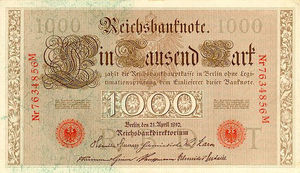
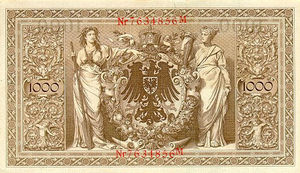
- Nominale waarde: 1000 Mark
- Picknummer: 44b
- Jaar van uitgifte: 1910
- Serienummer in eigen collectie: 9314533E
- Voorzijde:
- Achterzijde: allegorische figuren 'Navigatie' en 'Landbouw' rond de Duitse Adelaar
20 Mark - P46b
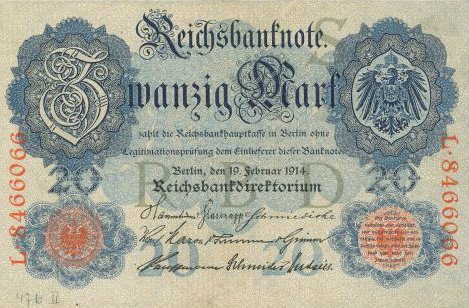
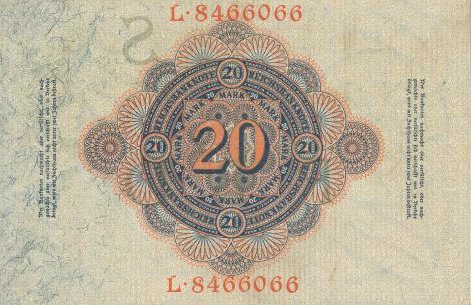
50 Mark - P49b
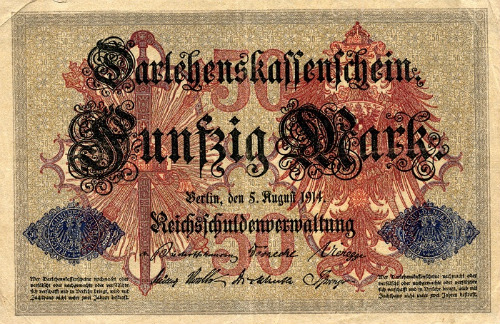
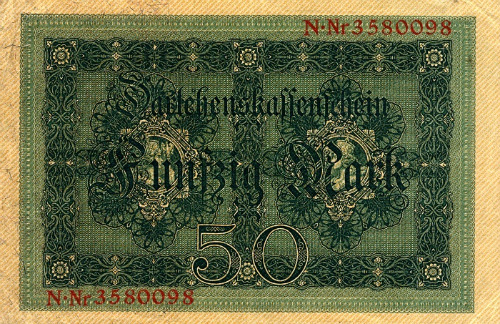
5 Mark - P56a1
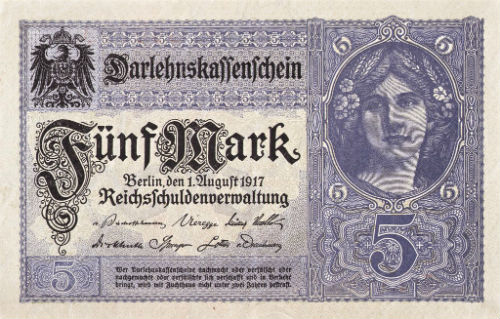
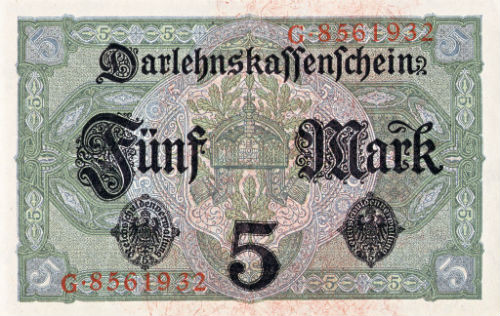
5 Mark - P56b1
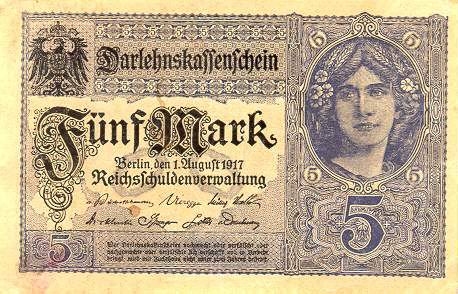
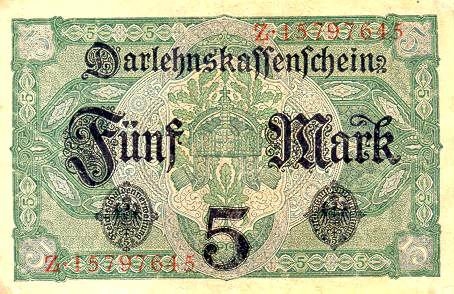
20 Mark - P57
